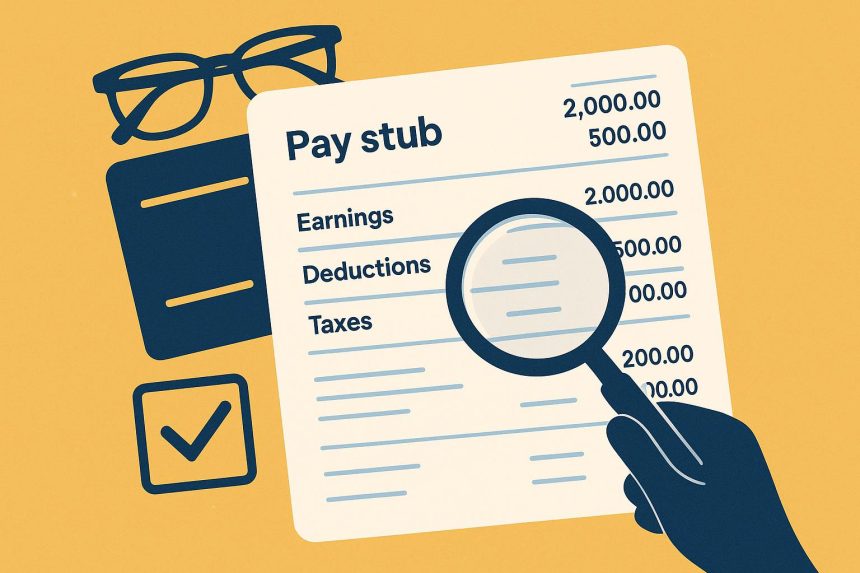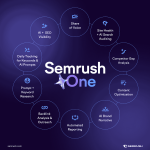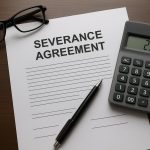A pay stub is more than just a slip of paper or a digital file attached to an email; it’s an essential financial record that bridges the gap between employees and payroll departments. For employees, it serves as proof of income, a breakdown of earnings, and a tool for managing personal finances. For payroll teams, it’s the official record that ensures compliance, accuracy, and transparency.
But what truly makes a pay stub readable? The answer lies in a combination of clarity, consistency, and completeness. Let’s break down the qualities of a well-structured pay stub from both perspectives.
1. Clear Identification of Basic Information
At its core, a pay stub must immediately communicate who it belongs to and where it comes from. Essential details include:
- Employee name and ID number
- Employer’s name, logo, and contact details
- Pay period dates
- Pay date
For employees, this clarity removes confusion about whether they’re reviewing the correct document. For payroll staff, it ensures accurate recordkeeping across multiple employees, preventing costly mix-ups.
2. Transparent Earnings Breakdown
Employees want to know exactly how their wages are calculated. A readable pay stub breaks down gross earnings into categories such as:
- Regular hourly wages or salary
- Overtime pay
- Bonuses or commissions
- Holiday or sick pay
By itemizing these components, employees gain confidence in the accuracy of their pay. For payroll, clear breakdowns simplify error-checking and auditing, reducing disputes and questions.
3. Deductions Presented in an Understandable Way
Deductions are often the most confusing part of a pay stub. Taxes, insurance contributions, and retirement savings all affect the final net pay, but if they’re presented in a cryptic or cluttered way, employees may feel uncertain or even distrustful about what’s being withheld.
Readable pay stubs separate deductions into logical categories:
- Taxes (federal, state, and local)
- Benefits (health, dental, vision)
- Retirement plans (401(k), pensions)
- Miscellaneous (union dues, garnishments)
When deductions are clearly labeled and subtotaled, employees can see exactly where their money is going. Payroll teams also benefit because a transparent layout makes audits and compliance checks more efficient.
4. Easy-to-Read Net Pay Highlight
At the end of the day, most employees care about one figure: the net pay or “take-home pay.” A readable pay stub highlights this figure with larger text, bold font, or a dedicated section.
For payroll, this prominent display also reduces the number of repetitive questions from employees who only want to know their bottom line. When information is clear, payroll staff spend less time explaining basics and more time focusing on compliance and reporting.
5. Year-to-Date Totals
Year-to-date (YTD) information is another must-have for readability. By showing cumulative earnings, deductions, and contributions, employees can track their progress toward goals like retirement savings or tax planning.
For payroll, YTD data ensures consistency across pay periods and provides a built-in way to check for errors. If a discrepancy shows up in YTD totals, it’s often a sign of a reporting mistake that needs correcting.
6. Consistent Formatting and Layout
Even if the information is complete, poor formatting can ruin readability. Fonts that are too small, cramped tables, or inconsistent layouts across pay periods all confuse. A professional, standardized template is essential.
Modern tools like an adp paystub generator help create consistent, professional layouts that comply with federal and state laws while also being visually easy to digest. For payroll departments, such tools streamline the process of producing pay stubs at scale without sacrificing readability.
7. Accessibility in Both Digital and Print Formats
Today’s workforce is diverse, some employees prefer paper stubs, while others rely on digital versions they can access on their phones. To be truly readable, a pay stub should be designed for multiple formats.
- Digital formats should be mobile-friendly and downloadable.
- Print formats should be easy to reproduce without losing clarity.
Using an editable PDF blank pay stubs template is one practical way to ensure accessibility. Employees can easily download, save, or print their stubs for personal use, while payroll ensures compliance by using a secure, editable format.
8. Compliance With Legal Requirements
Readability isn’t just about convenience; it’s also about legality. Federal and state labor laws often require specific details on pay stubs, such as hourly rates, total hours worked, or employer identification numbers.
For employees, readable stubs protect their rights and provide documentation for disputes, loan applications, or tax filings. For payroll, compliance minimizes the risk of legal penalties and ensures that the company remains in good standing with labor authorities.
9. Employee-Centric Design
At the heart of readability is empathy. Payroll teams should design pay stubs with the employee’s perspective in mind. This means avoiding jargon, using plain language where possible, and including explanatory notes for uncommon deductions.
When employees feel informed and respected, trust in the payroll process grows. This not only improves workplace morale but also strengthens the company’s reputation as a transparent and employee-friendly organization.
Final Thoughts
A pay stub may seem like a small piece of paper or a simple digital file, but it carries immense importance for both employees and payroll teams. Readability ensures transparency, builds trust, and simplifies financial tracking.
From clear identification and transparent breakdowns to professional formatting and legal compliance, every element matters. With modern tools and templates, payroll departments can create pay stubs that are not only legally sound but also genuinely useful for employees.
In the end, a readable pay stub isn’t just a record; it’s a tool for financial empowerment.
Lynn Martelli is an editor at Readability. She received her MFA in Creative Writing from Antioch University and has worked as an editor for over 10 years. Lynn has edited a wide variety of books, including fiction, non-fiction, memoirs, and more. In her free time, Lynn enjoys reading, writing, and spending time with her family and friends.















